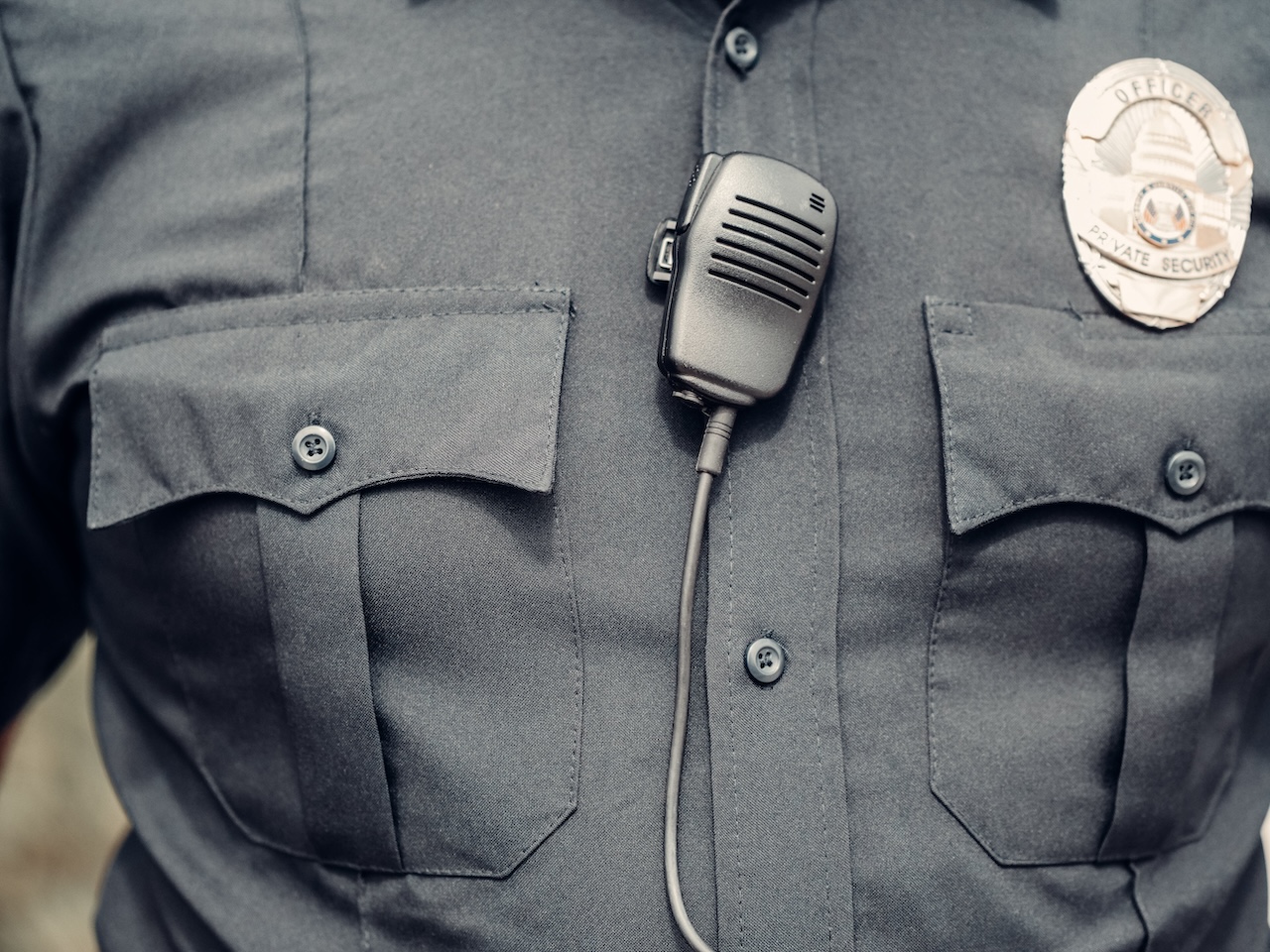In a world where safety and order are paramount, security guards play a vital role in protecting people, property, and public spaces. Whether you're considering a career in private security or are already navigating the industry, understanding the intricacies of security guard licensing is essential for a successful and fulfilling professional journey. In this guide, we will take a closer look at security guard licensing, particularly Class D and Class G licenses in the state of Florida. We’ll also explain the responsibilities of each and how to receive each license for yourself.
What is Security Guard Licensing?
Security guard licensing is a regulatory process that empowers individuals to work in the field of private security, ensuring a standard level of competency and professionalism across the industry. This licensing framework is designed to safeguard public safety, protect property, and maintain order in various settings. Whether aspiring security professionals are interested in unarmed or armed roles, obtaining the appropriate license is a crucial prerequisite for many states.
Security guard licenses are often categorized into classes, each representing a specific level of training and responsibility. Common classes of licensure, specifically in Florida, include Class D for unarmed security guards and Class G for armed security guards. In some states, specialization exists within these classes, allowing individuals to tailor their licensure to specific roles, such as event security, residential security, or retail security.
Security Guard Licensing by State
Security guard licensure is not universal across all states. Each state maintains its own set of regulations and requirements for security guard licensing, including training hours, background checks, and work experience. The classification of security guard licenses may also differ from one state to another.
While some states have specific classes for armed and unarmed guards, others have additional specializations or different classifications altogether. For example, Texas categorizes security guard licenses by levels: II, III, and IV. Level II security guard licenses equate to Class D licenses, while Level III licenses equate to Class G licenses.
Examples of states that require licensure for security guards:
- Texas (How to Become a Security Guard in Texas)
- Florida (How to Become a Security Guard in Florida)
- Minnesota (How to Become a Licensed Protective Agent in Minnesota)
- Illinois (How to Become a Security Guard in Illinois)
- California (How to Become a Security Guard in CA)
What is a Class D Security Guard License?
A Class D Security Guard license authorizes individuals to work as unarmed security guards in various states. From shopping malls to office buildings and residential complexes, Class D license holders play a crucial role in maintaining safety and security.
For individuals seeking a career in security, a Class D Security Guard license serves as an entry point into the field. It provides a foundational understanding of security principles and equips license holders with the skills necessary for unarmed security roles. Whether you're considering a part-time job while pursuing your education or a stepping stone toward a long-term security career, a Class D license opens doors to a variety of opportunities.
ENROLL NOW: Florida Class D Security Guard License Online Training
Learn more: Armed vs. Unarmed Security Guards: What’s The Difference?
Responsibilities of Class D Security Guards
Unarmed security officers with a Class D license are typically tasked with:
- Monitoring and Patrolling: Class D security guards are responsible for actively patrolling assigned areas to deter potential threats and ensure a visible security presence.
- Crowd Control: Unarmed security guards are often employed for large events like concerts, conventions, and festivals to help keep crowds under control and to direct the flow of traffic so all attendees remain safe.
- Access Control: Verifying identification, checking credentials, and managing access points to restricted areas are common duties for Class D license holders.
- Emergency Response: While unarmed, these security guards are trained to respond calmly and effectively in emergency situations, coordinating with law enforcement and other first responders.
Learn more: Security Guard Duties and Responsibilities
Obtaining a Class D Security Guard License
The process of obtaining a Class D Security Guard license involves several key steps:
- Training: Prospective security guards must undergo training that covers essential topics such as basic security procedures, legal aspects of security work, and emergency response protocols. Though states vary in how many hours are required, 40-hour training courses are standard.
- Background Check: A thorough background check is typically part of the licensing process to ensure individuals with criminal records or other disqualifying factors are not granted a license.
- State-Specific Requirements: Since regulations can vary by state, aspiring security guards should familiarize themselves with the specific licensing requirements in their jurisdiction.
Learn more: How to Become a Security Guard
Class D Security Guard Salary
Security guard salaries vary widely by state as the requirements and responsibilities vary by jurisdiction. The cost of living also plays a crucial part in a security guard’s salary, as can years of experience, areas of specialization, and other factors. In general, the yearly salary for an unarmed security guard ranges from $29,000 to $46,000, with the median salary falling around $36,869.
What is a Class G Security Guard License?
A Class G Security Guard license is a designation that grants individuals the authority to work as armed security guards. Unlike their unarmed counterparts with Class D licenses, Class G license holders are equipped to handle security responsibilities that involve the use of firearms, providing an added layer of protection to the environments they guard.
A Class G Security Guard license opens doors to a range of high-stakes security positions. Individuals interested in enhancing their skill set and taking on more advanced security roles may find the Class G license to be a valuable asset. Whether you're drawn to protect high-value assets, work in high-risk environments, or contribute to public safety in a more dynamic capacity, a Class G license can be the beginning of a rewarding career in armed security.
Learn more: What Firearms Can a Security Guard Carry?
Responsibilities of Class G Security Guards
Armed security officers with a Class G license often have a broader set of responsibilities than unarmed security guards, including:
- Weapon Handling: Class G license holders are trained to safely and responsibly carry and use firearms as part of their security duties.
- Threat Assessment: Armed security guards must be adept at assessing potential threats and responding appropriately to protect themselves and others.
- Emergency Situations: Class G license holders are trained to navigate high-stress situations, including emergencies that may require the use of force to maintain security and order.
Obtaining a Class G Security Guard License
Earning a Class G Security Guard license involves a more rigorous process compared to unarmed licenses. Key steps include:
- Firearms Training: In addition to the standard 40 hours of security guard training, individuals must undergo specialized training in the safe and effective use of firearms, often including marksmanship, maintenance, and legal considerations. Some states require up to 30 additional hours of firearm training for Class G guards.
- Background Check: A comprehensive background check is conducted to ensure that individuals seeking a Class G license meet the necessary criteria and do not pose a risk.
- State-Specific Requirements: As with any security license, it's crucial to be aware of and fulfill state-specific requirements for obtaining a Class G license.
Class G Security Guard Salary
Class G security guards typically have a higher salary range compared to Class D security guards due to the additional required training and the overall higher-risk nature of the job. In general, the yearly salary for an armed security guard ranges from $36,000 to $60,000, with the median salary falling around $47,372. Again, experience, areas of expertise, and jurisdiction can all play a part in influencing the salary of an armed security guard.
Secure Your Future
Receiving security guard licensure is a crucial step toward building a successful and impactful career in private security. Whether you're pursuing an unarmed Class D license or aiming for the added responsibilities of an armed Class G license, understanding the state-specific regulations and individual requirements is key.
Undergoing the necessary training to become a security guard can be time-consuming. That’s why NITA offers 100% online, 100% on-demand security guard training for individuals looking to level up their careers. We offer a wide variety of courses required by various states that will help you meet the required criteria, so you’ll be ready for your security guard state exam in no time. The next thing you know, you’ll be licensed and flourishing in your new career.
View all state pre-licensing courses for security professionals →
You might also like:
Our enrollment counselors are here to answer any questions you might have about our state- and board-approved status, pre-licensing training, or professional development programs.




